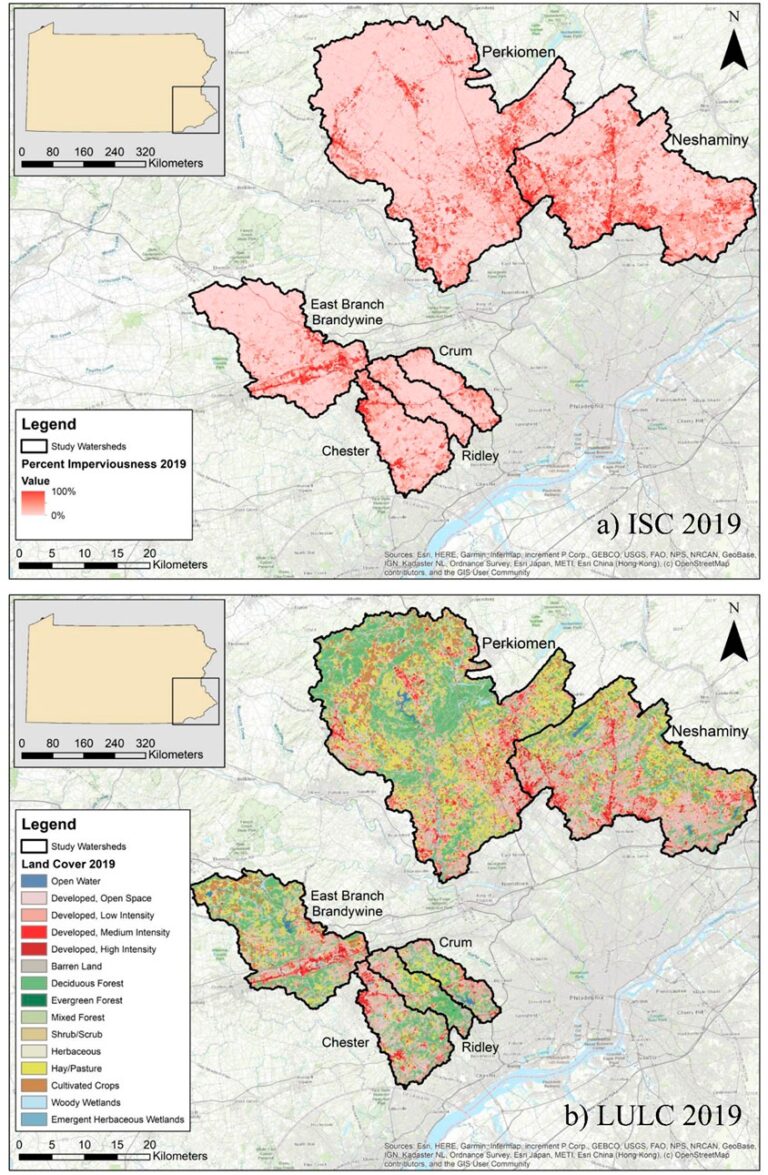The article discusses the freshwater salinization syndrome (FSS) occurring in urbanized areas of northern regions, particularly due to the application of road deicing salts. Over time, studies have shown increases in sodium (Na+) and chloride (Cl−) concentrations in rivers and streams, especially in watersheds with high impervious surface cover (ISC). The influx of these ions leads to cation exchange reactions in soils, displacing calcium (Ca2+), magnesium (Mg2+), and potassium (K+), thereby increasing their concentrations in waterways over time.
The research, based on a 20+ year dataset from six southeastern Pennsylvania watersheds, highlights that the use of road salt and urban development are primary drivers of major ion increases. Key findings include a significant rise in Na+, Ca2+, Mg2+, and Cl−, with annual water quality trends showing substantial increases across all watersheds. Conversely, sulfate (SO42-) concentrations generally decreased, likely due to stricter air pollution regulations.
Corrosivity indicators, such as the Chloride to Sulfate Mass Ratio (CSMR) and Larson Ratio (LR), showed rising trends, indicating an increased risk of corrosion in drinking water infrastructure, particularly for lead and iron pipes. Notably, Na+ concentrations frequently exceeded the U.S. Environmental Protection Agency’s recommended levels for low sodium diets, raising health concerns. Thus, road salt application and urban expansion are profoundly altering freshwater systems, warranting ongoing monitoring to address potential public health and infrastructure issues.
The study underscores the complex interactions between road salt usage, land development, subsurface water dynamics, and their implications for water quality and human health, advocating for improved management practices to mitigate these effects.


